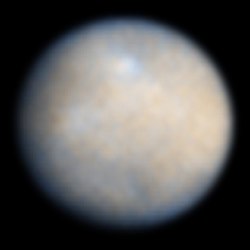The previous post discussed one method of sending a crewed mission to Mars: one-way, all expenses paid.
What was not discussed, and needs to be, is whether or not NASA should be spending any of its precious and limited resources on crewed space exploration at all.
With the Space Shuttle missions nearing their end, NASA is (wisely) turning the business of low-orbital cargo and personnel runs over to the private sector.
Spaceport America is nearly complete and should be fully operational by the middle of next year, with commercial flights to low orbit and commercial space stations finally becoming a reality.
This leaves two somewhat conflicting futures for NASA. The first, which seems to be getting the most funding from this current administration (which was decidedly not the case with the previous administration) is for unmanned deep space exploration, both in terms of next-generation replacements for Hubble such as the
James Webb Space Telescope, and also robot probes to the outer planets and their moons, and eventually to the nearest stars. The second is manned missions to the moon, Mars and beyond, with the ultimate goal of colonizing other worlds.
From the standpoint of pure research, this is a no-brainer. We do not need to send humans further into space than low earth orbit, and that only for routine maintenance of satellite telescopes. While it is true that a human is better equipped to respond to and analyze an alien environment than a robot is, it is still more cost effective (and much safer) to design and build better robots than it is to design missions around human life-support.
So, what is the value in creating manned missions to the moon, Mars and beyond?
Certainly there is something of a Mount Everest factor; humans are exploratory by nature, we want to go simply because we can. This stands alone without further comment; we want to go to Mars because, dammit, we want to go to Mars.
Some have suggested exploiting the planets and their moons for natural resources, but this is not going to be in any way cost-effective within this century, and it may never be. Titan holds interesting promise as a source of hydrocarbons, but by the time we would be able to extract and transport them to earth we will have hopefully ended our dependence on hydrocarbons for fuel and plastics.
The last (and probably best) reason to colonize some territory beyond earth's atmosphere is that right now all of the human population's eggs are in one basket, and we're just barely wise enough to realize that if we want to survive as a species, this is a really bad idea. If humans remain exclusively on earth's surface, we will eventually become extinct. It really doesn't matter so much whether the immediate cause of that extinction is an asteroid strike such as what led to the extinction of the dinosaurs, a near-by gamma ray burster, a super-volcano, war, plague, famine or global warming. Any of these have the potential to eradicate all human life on earth, and any of these have the potential to happen within the next ten thousand years, or the next ten thousand minutes. And each of these allow some possibility of the human species surviving if we happen to have already colonized off-world if and when they occur. It seems that NASA and DARPA are both looking at this possibility in regard to serious proposals for outmigration.
First off, let me state that the fact that NASA and DARPA
together have been allocated about $1,000,000 to study the possible means of outmigration means that the US government is not altogether paranoid about an asteroid hitting the earth this fiscal year. Of all of the possible means of human extinction, the one which is by far the most likely to actually cause that within the next century is global climate change, and we would be far better served spending our money eliminating our greenhouse gas emissions than building lifeboats to a planet which doesn't, as far as we know, support any life at all. But it is still reasonable to be preparing to get some of our eggs into a different basket, as a contingency for any of the myriad possible extinction-level events which could befall our world.
So, given our current technology, what are our best candidates in our solar system for a second home for our species?
I've given this a bit of consideration, and I'm going to name four candidates (which are not mutually exclusive of each other, it may well be that five baskets are better than two) for relatively easy colonization. Over the next few days I will talk about each candidate in more depth, and also discuss why I relegated a few candidates to the "B list" which others might not have.
So, my four candidates for potential colonization within this century are, in order of proximity to earth:
1) A large earth-orbiting artificial space station
2) The moon
3) Mars
4) One (or all) of the three outer Galilean moons of Jupiter, probably either Europa or Ganymede but Callisto has some marks in its favor as well. We'll discuss the possible merits of each of these.
Why not Enceladus or Titan? Both are excellent candidates for finding extraterrestrial life, but neither would be especially hospitable to humans, even as such things go. Enceladus is really small, and Titan is toxic. Neither of these problems are insurmountable, but the other candidates pose fewer challenges.
More to come.














